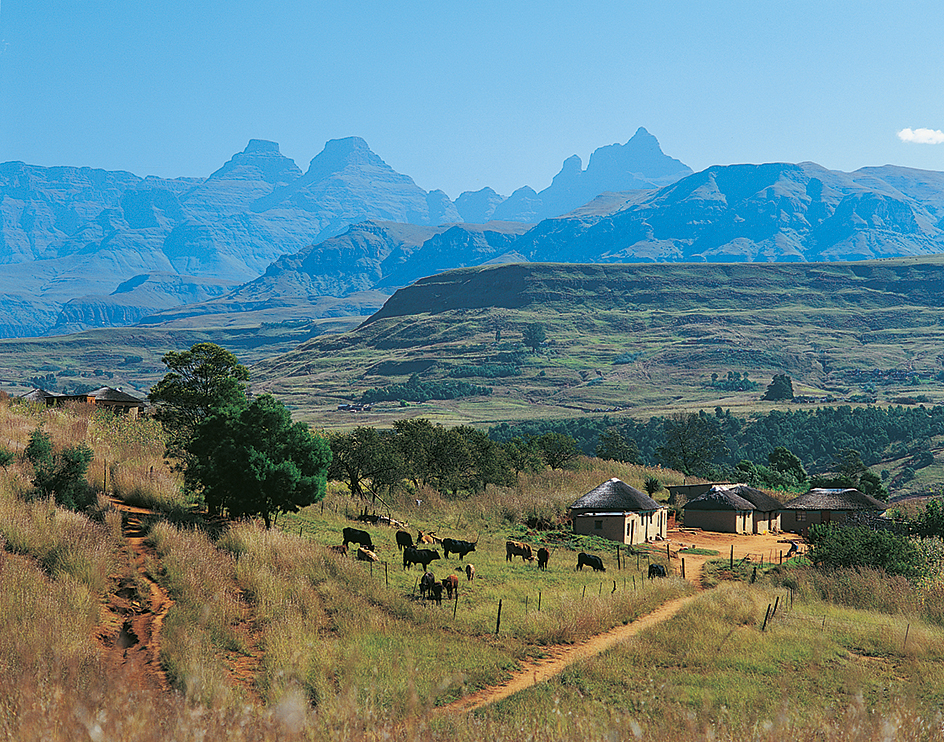Drakensberg is the most important range of mountains in South Africa. The range is over 620 miles (1,000 kilometers) long. It extends from the Stormberg Mountains in Eastern Cape province, through KwaZulu-Natal to the Wolkberg Mountains in eastern Mpumalanga. In most places, the mountain range forms part of the Great Escarpment, a semicircular series of cliffs separating the high inland plateau from the lower coastal belt. The highest peak in the range is Thaba Ntlenyana, which rises 11,425 feet (3,482 meters) in Lesotho. South Africa’s highest mountain, the 11,181-foot (3,408-meter) Njesuthi, is also in the Drakensberg.

The mountains act as South Africa’s main watershed, separating the rivers that flow into the Atlantic Ocean from those that flow into the Indian Ocean. Several of the country’s major rivers originate in the Drakensberg. The peak Mont Aux Sources gives rise to the Tugela, Orange, and Elands rivers. The Tugela River plunges through a deep gorge in the Drakensberg and forms a series of five waterfalls known as the Tugela Falls. The falls has a total height of 3,110 feet (948 meters) and is the second tallest waterfall on Earth. The tallest of the five falls has a drop of 1,350 feet (411 meters). Only Angel Falls in Venezuela is higher than the Tugela Falls.
The mountains originated about 150 million years ago when volcanic lava cooled and solidified, forming basalt. The Drakensberg were a main area of settlement of the San people. Magnificent San paintings can still be seen in several caves. The Zulu and Sotho peoples called the range uKhahlamba, which means “a barrier of pointed spears.” The Dutch settlers saw the peaks as the “home of dragons” or “dragon mountains,” which is the origin of the name Drakensberg.
In 1993, the KwaZulu-Natal government established the uKhahlamba/Drakensberg Park. In 2000, the United Nations Educational, Scientific and Cultural Organization (UNESCO) added the park to its World Heritage List.
